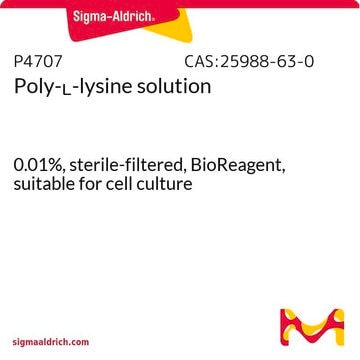S7117
ApopTag Plastic Coverslip
APOPTAG Plastic Coverslips are designed to be custom fitted to the specific APOPTAG kit application.
Synonym(s):
Plastic coverslip
Select a Size
About This Item
Recommended Products
Quality Level
manufacturer/tradename
ApopTag
Chemicon®
technique(s)
activity assay: suitable (apoptosis)
shipped in
ambient
General description
Application
Plastic coverslips may be trimmed to any desired size and shape. The kit′s yield of specimens will be reduced if larger than standard coverslips are used.
When using ApopTag Kits that contain the anti-digoxigenin antibodies (S7100, S7101, S7110, S7111), plastic coverslips can be used during the incubation steps with the following reagents: WORKING STRENGTH TdT, and the ANTI-DIGOXIGENIN ANTIBODY. When using the ApopTag Fluorescein Direct Kit (S7160), the plastic coverslips can be used during incubation steps with WORKING STRENGTH TdT.
A basic coverslip method is described as follows:
To make a pair of "standard area" (~5 cm2) specimen coverslips, cut a plastic coverslip (provided) into two equal halves, and fold up a 1 cm handling tab across the width, then crease sharply (See Figure 3 in insert).
Drain one slide for approximately 10 seconds, and then tap off drops on a paper towel on the benchtop. Blot back and sides of the slide with a folded wipe. Carefully blot the area around the tissue section or cells, or else vacuum up solution using a pipette attached to an aspirator vacuum.
Apply reagent solution to one end of the area to be covered, using a dropper bottle or pipette as required.
Grasp the plastic coverslip by the handling tab and touch its opposite end to the droplet of reagent on the slide. Slightly arching the coverslip, roll it slowly downward, causing the solution to spread by capillary action. If solution does not spread evenly, tilt the slide until the flow reaches all edges.
Apply plastic coverslips to microscope slides so as to minimize trapped air bubbles, which may cause variable enzyme reaction or detection.
Place the slide across the pipettes, face-up and level, inside the humidified chamber. The slide edges should not touch anything so as to prevent drainage of the reagent.
Storage and Stability
Legal Information
Disclaimer
Certificates of Analysis (COA)
Search for Certificates of Analysis (COA) by entering the products Lot/Batch Number. Lot and Batch Numbers can be found on a product’s label following the words ‘Lot’ or ‘Batch’.
Already Own This Product?
Find documentation for the products that you have recently purchased in the Document Library.
Active Filters
Our team of scientists has experience in all areas of research including Life Science, Material Science, Chemical Synthesis, Chromatography, Analytical and many others.
Contact Technical Service







